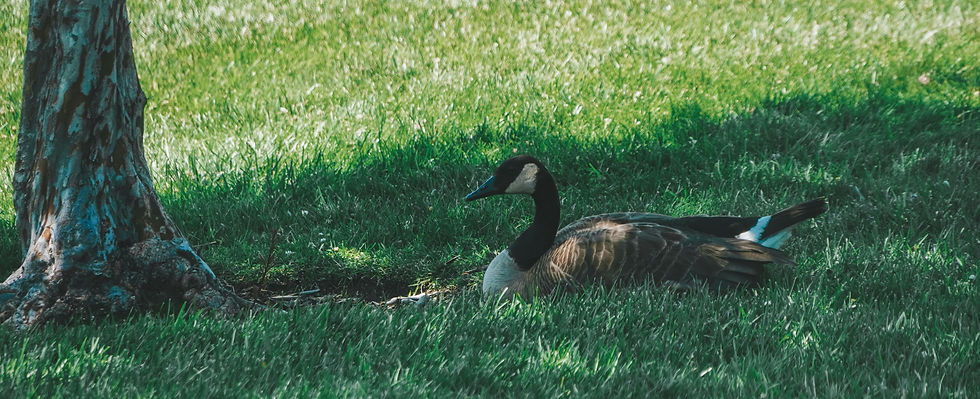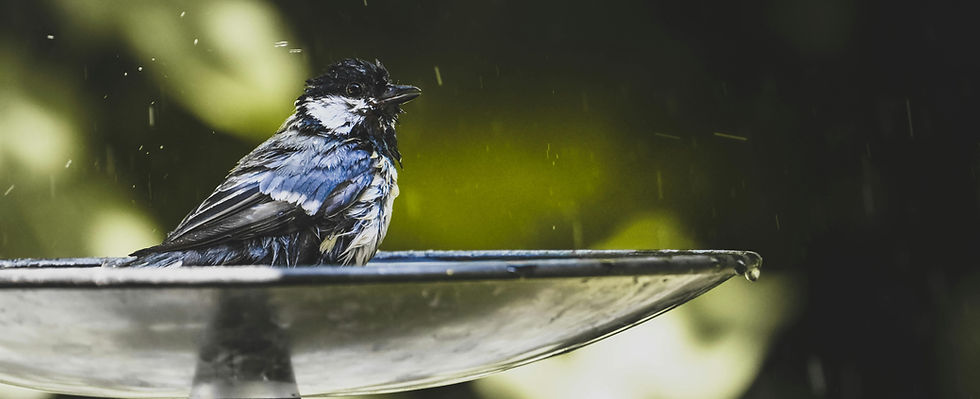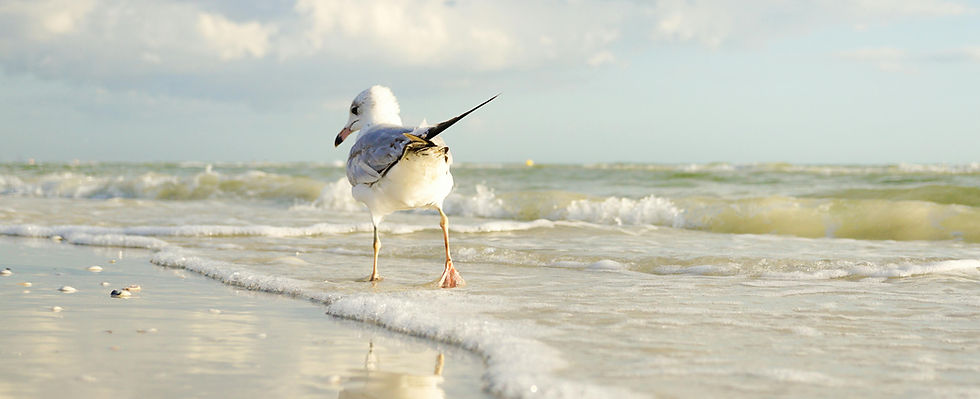A Summer Survival Guide for Birds: Signs of Birds Overheating
- Asha Park

- Jul 23
- 4 min read

As temperatures rise across the UK, extreme weather is no longer an occasional inconvenience - it’s becoming a regular and dangerous challenge for our native wildlife.
At Brent Lodge Wildlife Hospital, we are seeing first-hand the devastating impact of heatwaves on birds and other species. While wild animals have natural ways of keeping cool, the intensity and frequency of 'today’s' heat events are pushing them beyond their limits.
Understanding how birds regulate their temperature - and how we can support them - is a great step to ensuring their welfare is considered.
How Birds Keep Cool in the Wild
Birds are highly adaptable creatures, but they face unique challenges in hot weather. Unlike mammals, birds don't have sweat glands. Instead, they rely on a range of physical and behavioural strategies to stay cool:
Panting: Much like dogs, birds pant to evaporate moisture from their respiratory system.
Gular fluttering: Some species rapidly vibrate the thin skin of the throat to release heat.
Seeking shade: Birds instinctively seek out shaded areas to reduce direct sun exposure. Trees, hedgerows, and dense shrubs offer vital protection not just from the heat, but also from predators. In highly urban or heavily managed spaces, this shade can be scarce.
Bathing and preening: Access to water is critical. Birds will bathe in shallow puddles, birdbaths, or natural water sources to cool down. After bathing, they preen their feathers to maintain insulation and waterproofing. Without access to clean water, this essential behaviour becomes difficult or impossible.
Spreading wings and holding posture: You may see birds standing tall with wings slightly spread to allow air circulation.
Resting During the Hottest Hours
Most birds reduce activity during the peak heat of the day—usually between 11am and 4pm. They may perch motionless with wings slightly open to allow airflow across their bodies. However, constant heat with no cooling breaks can still lead to overheating, especially in juveniles and smaller birds.
These are effective behaviours under natural conditions- but when heat becomes extreme and water sources disappear, birds begin to struggle.

Why the Heat is More Dangerous Now
Heatwaves across he world and particularly in the UK are becoming longer, hotter, and more unpredictable. Urbanisation, habitat loss, and pollution are reducing the availability of shelter and clean water that birds would typically rely on. Many birds, especially fledglings and smaller species, cannot cope with prolonged exposure to high temperatures without access to cool, shaded areas and hydration.
Each summer, Brent Lodge experiences a surge in wildlife casualties suffering from heat-related conditions such as heat stress, dehydration, and heatstroke. These cases are both heartbreaking and, in many instances, entirely preventable. As temperatures rise and natural water sources dry up, many wild animals - particularly young, sick, or displaced individuals - struggle to survive.
Our team works around the clock to provide emergency care, but these seasonal challenges continue to grow. Here’s how we help:
Rehydration and Cooling: We administer fluids, provide shaded, ventilated recovery spaces, and monitor patients closely to regulate their body temperatures.
Emergency Admissions: Hedgehogs, birds, and other small mammals are frequently brought in collapsed, disoriented, or severely weakened from exposure.
Public Education: We raise awareness on simple preventative actions the public can take - such as leaving out shallow water dishes and avoiding disturbance during the hottest parts of the day.
Habitat Advice: We guide local communities on how to create wildlife-friendly spaces that offer natural shade, shelter, and hydration sources.
Long-Term Recovery: Patients often require days or weeks of specialised care before they’re strong enough to be released back into the wild.
With climate extremes becoming more frequent, this type of intervention is becoming an increasingly vital part of our work each summer. We can receive up to 100 young or injured birds each week during the peek of summer. Support our work by sponsoring a bird in our care.

How You Can Help Birds Beat the Heat
There are several simple, impactful actions you can take in your garden, balcony, or community green space to give birds a better chance in hot weather.
1. Provide Clean, Shallow Water
Birds need access to water for both drinking and bathing. Place shallow dishes or birdbaths in shaded spots, and refresh them frequently to prevent them from drying out or becoming contaminated. If possible, leave out more than one source in different areas.
2. Offer Natural Shade
Allow hedges, shrubs, trees, and wild areas to grow—these provide vital cooling spaces. Avoid cutting back greenery in the summer months, as birds rely on dense vegetation for shelter and temperature regulation.
3. Don’t Disturb Nesting Birds
Birds nesting in hot conditions are under enormous pressure to keep their chicks cool and hydrated. Approaching nests can cause adult birds to flee, leaving young birds exposed to the heat. Keep a respectful distance and minimise disturbance.
4. Feed Responsibly
If you choose to feed birds in summer, do so in moderation and with care. Avoid fatty or suet-based foods in high temperatures, which can go rancid. Offer soaked mealworms or fruit (like apple or pear), and place feeders in the shade to prevent spoilage.
5. Be Vigilant for Signs of Distress
Birds suffering from heat stress may appear fluffed up, lethargic, disoriented, or remain grounded. If you’re concerned, contact a wildlife rescue like Brent Lodge before attempting to intervene. In some cases, well-meaning but uninformed handling can cause further stress.

A Call for Compassion and Awareness
Wildlife across the UK is not only battling a changing climate, but also the ongoing effects of human activity—from habitat destruction to pollution, and from garden chemicals to misinformation. Heatwaves are a stark reminder that our lack of awareness has real consequences for vulnerable species.
Birds cannot ask for help. They cannot move feeders into the shade, refill empty baths, or plant trees. But we can. By understanding how birds keep cool and making small, meaningful changes to our habits, we can all play a role in reducing the strain on wildlife during periods of extreme heat.
To find out more or to support our work caring for heat-stricken animals please visit the advice link below!
By Asha Park



Comments